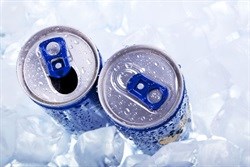
Subscribe & Follow
Advertise your job vacancies
Jobs
Innovations in aluminium packaging changes consumers' drinking habits
Innovations in the aluminium packaging of beverages in South Africa are changing consumers' drinking habits. Shawn Henning, Analytics Director at BMi Research, says the growing variety of aluminium can sizes, greater choice of brands available in cans, plus increased promotional activity in the canned beverage arena are all contributing factors to the changing landscape.

© fikmik – 123RF.com
"The introduction of slimline cans a few years ago and more recently, the expanded availability of the 440ml and larger cans, are particularly significant developments. Traditionally, 440ml 'mega cans' were largely used for promotions but a growing number of brands, including those in the beer, soft drinks and energy drinks categories, are upsizing their products for mainstream distribution. This larger can size generally has a good price point and it represents added value - plus the beverage industry has been successful in promoting it - so much so that in some circles the 440ml can is becoming the consumers' pack of choice.
Henning says that although aluminium cans still represented a smaller share of total beverage packaging, it had gained ground from glass and PET because of innovation, new introductions and significant promotional activity.
"Five years ago, we would not have seen billboards promoting beverages in cans. Today, ads for cans are everywhere - including outdoor, radio, print and television - and they're promoting a growing variety of brands available in cans such as Energade, Game, Hunters, Coo-ee and Savanna."
He adds that Savanna's move back into aluminium cans after many years of only being available in glass clearly indicated a shift in consumer demand. "Obviously, the practical benefits of cans such as durability and versatility are also driving demand, notwithstanding the recyclable benefits offered from aluminium cans.
"The look and feel of aluminium cans is also changing and is different from the traditional tin plate. The printing is noticeably different, the cans are softer and significantly lighter, adding to the sustainability benefits offered."
Marketers were also continually exploring ways of differentiating their brands with packaging innovation. "New ideas such as Castle Lite's Cold Rush 'Easy-flow' can with its wider mouth opening and 3D printing show how a 'can-do' attitude is changing the way people drink," he concludes.







